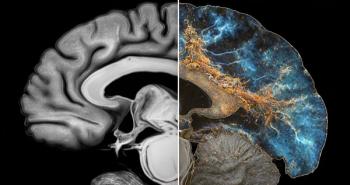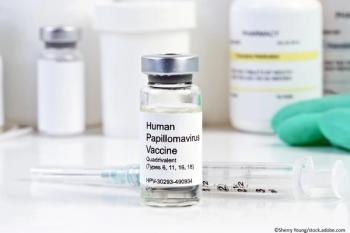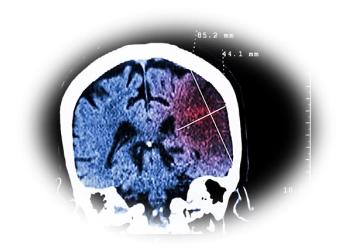
The Expanding Role of Family Medicine in Alzheimer Disease and Other Dementias
As dementia care grows more complex and more promising, the role for front-line clinicians is becoming more nuanced and more essential.
Family medicine's unique position in dementia management spans initial diagnosis through end-of-life care. As disease-modifying therapies join established symptomatic treatments, the landscape grows more complex, encompassing advanced staging tools, expanded pharmacologic options, and refined behavioral management strategies.
These topics and others related to assessment and management of early and advanced cognitive decline were on the agenda during day 3 of the 2025 Family Medicine Experience (FMX) in Anaheim, California, October 5-9.
Dementia Staging: Clinical Assessment and Hospice Eligibility
For practical bedside assessment and hospice determination, the Functional Assessment Staging Tool (FAST) proves particularly valuable.1 The FAST scale includes 7 main stages, progressing from no impairment (stage 1) through severe dementia requiring total care (stage 7). Stage 7 breaks down further into substages (7a-7f) that capture specific functional losses including ambulation, independent sitting, smiling, and head control.
Eligibility for hospice care generally requires FAST stage 7c or beyond, indicating the inability to ambulate and dress without assistance, urinary and fecal incontinence, and inability to speak or communicate meaningfully.2 Criteria used to support an assessment of stage 7c include recent aspiration pneumonia, septicemia, multiple stage 3-4 pressure ulcers, recurrent fever, and insufficient oral intake with weight loss. Timely hospice referral significantly improves quality of life for patients and families navigating advanced dementia, making recognition of stage 7c criteria particularly valuable in clinical practice.
Traditional Oral Pharmacotherapy for Alzheimer Disease
Cholinesterase inhibitors. Cholinesterase inhibitors and memantine remain the cornerstone of symptomatic treatment for Alzheimer disease (AD). Three cholinesterase inhibitors—donepezil, rivastigmine, and galantamine—address the cholinergic deficit by preventing acetylcholine breakdown, providing modest cognitive and functional benefits typically equivalent to delaying progression by 6-12 months.3 Initiating these medications at low doses with gradual titration minimizes adverse effects that include gastrointestinal upset, bradycardia, and vivid dreams.
NMDA-receptor inhibitors. Memantine, an NMDA receptor antagonist, provides a complementary mechanism of action by regulating glutamatergic neurotransmission.4 Approved for moderate-to-severe AD, memantine can be used as monotherapy or combined with cholinesterase inhibitors for additive benefit. Tolerability is better than with cholinesterase inhibitors; dizziness and headache are reported as primary adverse effects.
While these medications do not alter disease progression, they provide meaningful symptomatic benefit for many patients. In discussion with both patients and caregivers, it is essential to establish realistic expectations: these treatments may temporarily stabilize function but will not prevent ultimate decline. Regular reassessment of benefit versus burden becomes particularly important in advanced stages when medication discontinuation may be appropriate.
Anti-Amyloid Monoclonal Antibodies: Disease Modification, Contraindications
The FDA approval of lecanemab (Leqembi; Esai, Biogen) in January 2023 and donanemab (Kisunla; Eli Lilly) in July 2024 represents a significant paradigm shift in treatment of AD.5 These anti-amyloid monoclonal antibodies (mAbs) have demonstrated modest but statistically significant slowing of cognitive and functional decline in early AD, corresponding to approximately 5-7 month delays in progression over 18 months.
Antiamyloid mAb risks. Lecanemab and donanemab both carry significant risks requiring careful consideration in primary care practice. Amyloid-related imaging abnormalities (ARIA) represent the primary safety concern, occurring in 12-13% of lecanemab-treated patients and up to 24% of donanemab-treated patients.6 ARIA encompasses cerebral edema (ARIA-E) and microhemorrhages (ARIA-H). While most cases have been reported as asymptomatic, there have also been reports of serious neurologic complications or death.
Many patients will not meet eligibility criteria, and shared decision-making must address whether marginal symptomatic benefits justify treatment complexity and risks.
There are critical contraindications to use of anti-amyloid mAbs, including more than 4 cerebral microhemorrhages on baseline MRI, any area of superficial siderosis, concurrent anticoagulation therapy, and prior severe ARIA with anti-amyloid therapy.7 The risk of ARIA is substantially greater among APOE4 carriers, particularly homozygous carriers, and these individuals, family members, and other caretakers require sensitive counseling. The approved indications are for biweekly or monthly intravenous infusions, baseline and periodic brain MRI monitoring, and confirmed early-stage disease with biomarker evidence of amyloid pathology.
Essential primary care role. While neurologists typically initiate these therapies, primary care involvement encompasses understanding eligibility criteria, recognizing potential adverse effects, coordinating imaging surveillance, and providing realistic counseling about modest clinical benefits weighed against significant monitoring burden, infusion reactions, ARIA risks, and substantial costs. Many patients will not meet eligibility criteria, and shared decision-making must address whether marginal symptomatic benefits justify treatment complexity and risks.
Managing Agitation in AD and Other Dementias
Geriatric psychiatrist George Grossberg, MD, told Patient Care in a recent interview that first-line management should always focus on nonpharmacologic interventions that may include structured routines, music therapy, validation techniques, caregiver education, environmental modifications, and exercise programs. These approaches prove effective for many patients and avoid medication risks.
Agitation treatment pitfalls. When nonpharmacologic approaches prove insufficient and agitation poses safety risks, management with medication becomes necessary. Selective serotonin reuptake inhibitors, particularly citalopram (20-30 mg daily) and sertraline, demonstrate modest efficacy with acceptable safety profiles, though citalopram carries risk for QTc prolongation and requires regular ECG monitoring.8
Atypical antipsychotics are not FDA-approved for dementia-related agitation but are frequently administered to treat severe symptoms. Risperidone has the strongest evidence for reducing aggression but increases stroke risk and mortality, making a careful risk-benefit assessment and informed consent paramount before initiating treatment.9
Quetiapine and aripiprazole are alternatives with different adverse effect profiles. The FDA black box warning regarding increased mortality risk in elderly dementia patients treated with antipsychotics mandates judicious use at the lowest effective doses for the shortest duration necessary. The association between benzodiazepines and increased confusion, falls, and paradoxical agitation argues strongly against their use in this population.
Final Thoughts
The family physician's role throughout the dementia care continuum remains indispensable. Proficiency in using staging tools like FAST supports appropriate treatment stratification and timely hospice referral. Familiarity with both traditional symptomatic therapies and emerging disease-modifying treatments facilitates informed discussions about realistic expectations. Systematic approaches to behavioral symptoms—emphasizing non-pharmacologic interventions while judiciously employing medications when necessary—optimize patient safety and quality of life.
References
Reisberg B. Functional assessment staging (FAST). Psychopharmacol Bull. 1988;24(4):653-659.
Medicare hospice benefits for patients with dementia. Centers for Medicare & Medicaid Services Local Coverage Determination (LCD): Hospice - Determining Terminal Status (L33393). Updated 2023.
Birks JS, Harvey RJ. Donepezil for dementia due to Alzheimer's disease. Cochrane Database Syst Rev. 2018;6(6):CD001190.
Matsunaga S, Kishi T, Iwata N. Memantine monotherapy for Alzheimer's disease: a systematic review and meta-analysis. PLoS One. 2015;10(4):e0123289.
van Dyck CH, Swanson CJ, Aisen P, et al. Lecanemab in early Alzheimer's disease. N Engl J Med. 2023;388(1):9-21.
Sims JR, Zimmer JA, Evans CD, et al. Donanemab in early symptomatic Alzheimer disease: the TRAILBLAZER-ALZ 2 randomized clinical trial. JAMA. 2023;330(6):512-527.
Cummings J, Aisen P, Apostolova LG, et al. Lecanemab: appropriate use recommendations. J Prev Alzheimers Dis. 2023;10(3):362-377.
Porsteinsson AP, Drye LT, Pollock BG, et al. Effect of citalopram on agitation in Alzheimer disease: the CitAD randomized clinical trial. JAMA. 2014;311(7):682-691.
Schneider LS, Dagerman KS, Insel P. Risk of death with atypical antipsychotic drug treatment for dementia: meta-analysis of randomized placebo-controlled trials. JAMA. 2005;294(15):1934-1943.
Newsletter
Enhance your clinical practice with the Patient Care newsletter, offering the latest evidence-based guidelines, diagnostic insights, and treatment strategies for primary care physicians.



























































































































































































































































































